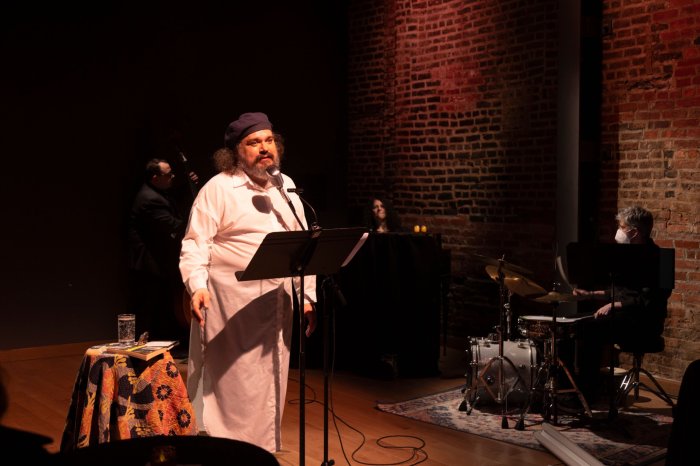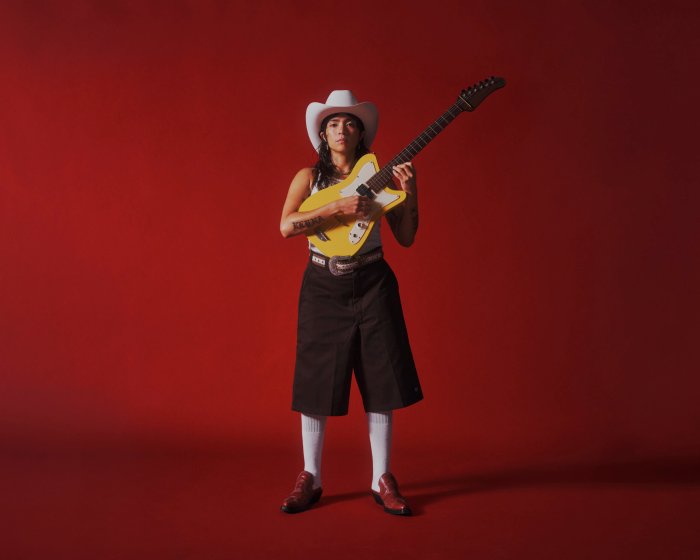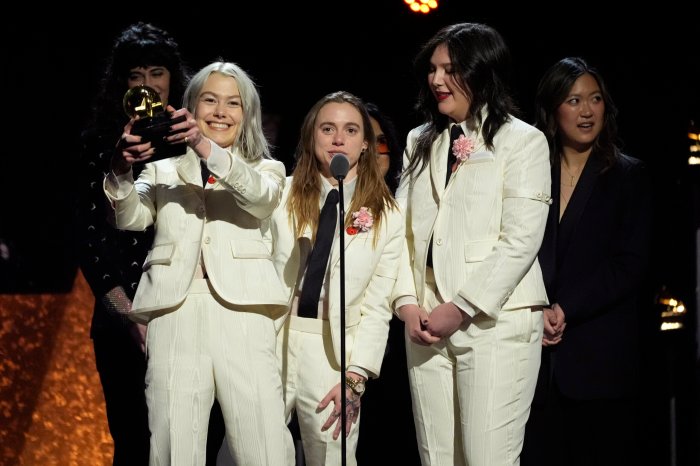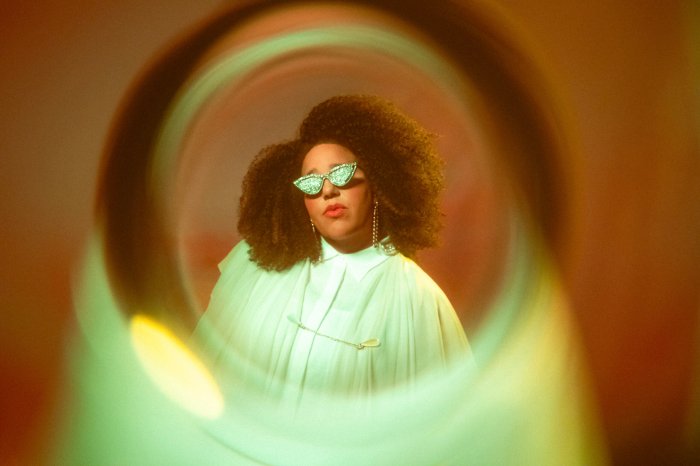Daniel Montenegro and Elaine Alvarez in the New York premiere of Daniel Catán’s adaptation of Nathaniel Hawthorne’s “Rappaccini’s Daughter.” | RICHARD TERMINE
On June 17, a beautiful early summer evening, Neal Goren and the Gotham Chamber Opera presented the New York professional stage premiere of Daniel Catán’s 1988 Spanish-language adaptation of Nathaniel Hawthorne’s “Rappaccini’s Daughter” — “La hija de Rappaccini.” Gotham continued its tradition of site-specific performances by staging the tale of a deadly garden of delights al fresco in the Brooklyn Botanical Garden’s Cherry Esplanade.
The late Mexican composer (who died suddenly in 2011) was commissioned to do a new work for the company but was too busy to fulfill his contract. Music director Goren had been seduced by the voluptuous, decadent late-Romantic charms of “La Hija de Rappaccini” at a student performance at the Manhattan School of Music. He decided instead to give the world premiere of a reduced chamber orchestration by Catán, and the composer’s widow, Andrea Puente Catán, played the harp in an ensemble that included two pianos and percussion as well.
The opera was staged by Rebecca Taichman on two platforms in front of an arbor of trees with flowering plants in the distance. One platform represented the student Giovanni’s bedroom that overlooks Rappaccini’s garden, where he first sees and becomes obsessed with the mysterious Beatriz. The other platform represented the garden dominated by a single flowering tree, which Beatriz describes as “her brother.” Three flower maidens (shades of Wagner’s “Parsifal” and Strauss’ trio of nymphs in “Ariadne auf Naxos”) were dressed in floral couture. Warbling vocal obbligato wafted from one platform to another, enticing Giovanni to his fate.
Gotham Chamber Opera premieres “La hija de Rappaccini”; Philharmonic presents “Il Prigioniero”
Catán’s musical language owed a lot to Debussy, Ravel, and Puccini as well as Obradors, Granados, and Monsalvatge. Vocal lines are lyrical and sensuous, and Giovanni’s aria that ended Act I — “Beatriz, puerta del mundo” — elicited an enthusiastic ovation. As Giovanni, Daniel Montenegro’s honeyed tenor provided pleasure all night, and his graceful youthful stage presence and expressive eyes were perfect for the naïve young student drawn into a sinister web. Elaine Alvarez as Beatriz fields a smoky voluptuous soprano perfect for Catán’s musical idiom, but passing intonation problems plagued her and her tone was not always free. Brian Downen’s urgent tenor and stalwart presence suited Professor Baglioni. Baritone Eric Dubin was a sonorous, stoic Dr. Rappaccini, with a solid upper register. Jessica Grigg’s tangy mezzo lent suggestive character to the intrusive landlady Isabela.
The singers and musicians were miked but the sound design was clear, free of distortion, and unobtrusive. Goren led his miniature forces with clarity and a surprising richness of instrumental texture. Catán’s perfumed harmonies mixed with the gentle dusk of a mild evening created a different kind of operatic enchantment.
When the New York Philharmonic announced that their annual operatic presentation, performed in early June, would be a 12-tone work, I wasn’t enthusiastic. Luigi Dallapiccola wrote his expressionistic one-act opera “Il Prigioniero” (“The Prisoner”) immediately after World War II.
Set during the 16th century Eighty Years’ War, its exploration of the psychological effects of imprisonment is timeless. The libretto, by the composer, tells the story of a tortured prisoner whose cell door is left open by a seemingly sympathetic jailer, who convinced him the Flemish rebels are winning. The prisoner wanders through an underground passage dreaming of liberty but at the last moment is met by the Inquisitor (sung by the same singer as the jailer), who condemns him to be burnt at the stake. The final and cruelest torture is false hope. Dallapiccola originally wrote the 50-minute opera for the Italian radio, and it works very well in a concert context.
Dallapiccola’s compositional technique may be Austrian in origin but his vocal writing and dramatic sensibility are thoroughly Italian. The vocal writing is declamatory but sits well on the voice, projects the text expressively, and is integrated into the orchestral texture. I heard a bracing mixture of Prokofiev, Berg, Debussy, and Italian verismo in this score.
The serialist and 12-tone techniques are employed for lyrical atmospheric effects. The orchestral colors range widely over the spectrum from bleak fragmented chords and darkly thundering tuttis to offstage religious chorales in Latin that are both ethereal and oppressive. Alan Gilbert elicited a brilliant palette of orchestral timbres over a huge dynamic spectrum, though he occasionally neglected to tamp down the volume so the singers could be heard. The Philharmonic played with total dramatic commitment.
Soprano Patricia Racette brought anguished intensity to the Mother’s nightmare monologue. Gerald Finley, always a committed artist, sang the title character with dramatic authority and many vocal colors. Tenor Peter Hoare sang the Jailer/ Inquisitor with an initially dulcet tone that turned poisonous in the last scene.
Dallapiccola’s opera was preceded by violinist Lisa Batiashvili in an astonishing reading of Prokofiev’s “Violin Concerto No. 1 in D.” Batiashvili brought a wide range of colors from her instrument as if it were an orchestra within an orchestra.
In April the New York City Opera returned for a two-week season to City Center, its original home, which it vacated in 1965. The repertory was offbeat: Rossini’s “Mosè in Egitto” (“Moses in Egypt”) and Offenbach’s popular but locally neglected operetta “La Périchole.”
Rossini’s 1818 semi-oratorio is based on the book of Exodus and was later greatly expanded for Paris –– this later version superseded the Naples original in international popularity. The NYCO presentation was ambitious and imaginative but decidedly a partial success. Rossini was writing for the best singers in Europe, but NYCO cast either newcomers or experienced second stringers.
David Salsbery Fry, the cover Moses, sang with a dry tone that was short on both top and bottom –– a comprimario in a star role. Wayne Tigges blustered as the easily manipulated Pharaoh. Tenor Randall Bills sang the treacherous Prince Osiride with a monochromatic, reedy tenor that easily handled the divisions but was better suited to comic opera. Aldo Caputo sang Aronne in a clear tenor with native Italian style.
Soprano Siân Davies as Elcia, the Hebrew maiden torn between her love for the Egyptian prince and her duty to her people, sounded fluttery with a generic timbre. In her final solo aria, Davies emerged with a bigger, steadier sound launching confident high notes and scales. Keri Alkema’s smoky dark soprano covered the wide vocal range of Queen Amaltea effortlessly with thrilling command.
Director Michael Counts utilized a huge LED screen to project scenery that moved and changed perspective creating a cinematic effect. The basic idea was good (and economical) but overused –– the images zoomed in and out distractingly every few minutes. The visual style ranged from “Ten Commandments” ‘50s Hollywood biblical spectacular to Robert Wilson light bars. The “Star Trek” costumes and hieratic gestures of the principals were also from the School of Wilson. New music director Jayce Ogren conducted a decent to good pick-up orchestra with fine rhythmic attack and control.
“La Périchole” was done in by an aggressively tacky staging by Christopher Alden that seemed to be set in a ‘70s era Tex-Mex lounge. A bar was situated stage left with an omnipresent bartender, and umbrella drinks were consumed throughout the show. Offenbach’s musical elegance was better served by conductor Emmanuel Plasson and the two francophone leads. Marie Lenormand in the title role was winsome and droll but has a mezzo voice of more character and style than beauty. Philippe Talbot had a touch of the Gallic pop crooner Luis Mariano in his light tenor, which worked perfectly.
Kevin Burdette was the Viceroy from Outer Space as Don Andrès –– this was performance art not a performance. Modeling “The Fly” disguises and talking like the Terminator in a cowboy outfit, he seemed to be channeling the young Dan Ackroyd on LSD. The audience reacted with a combination of confused alienation and uncertain laughter.


































